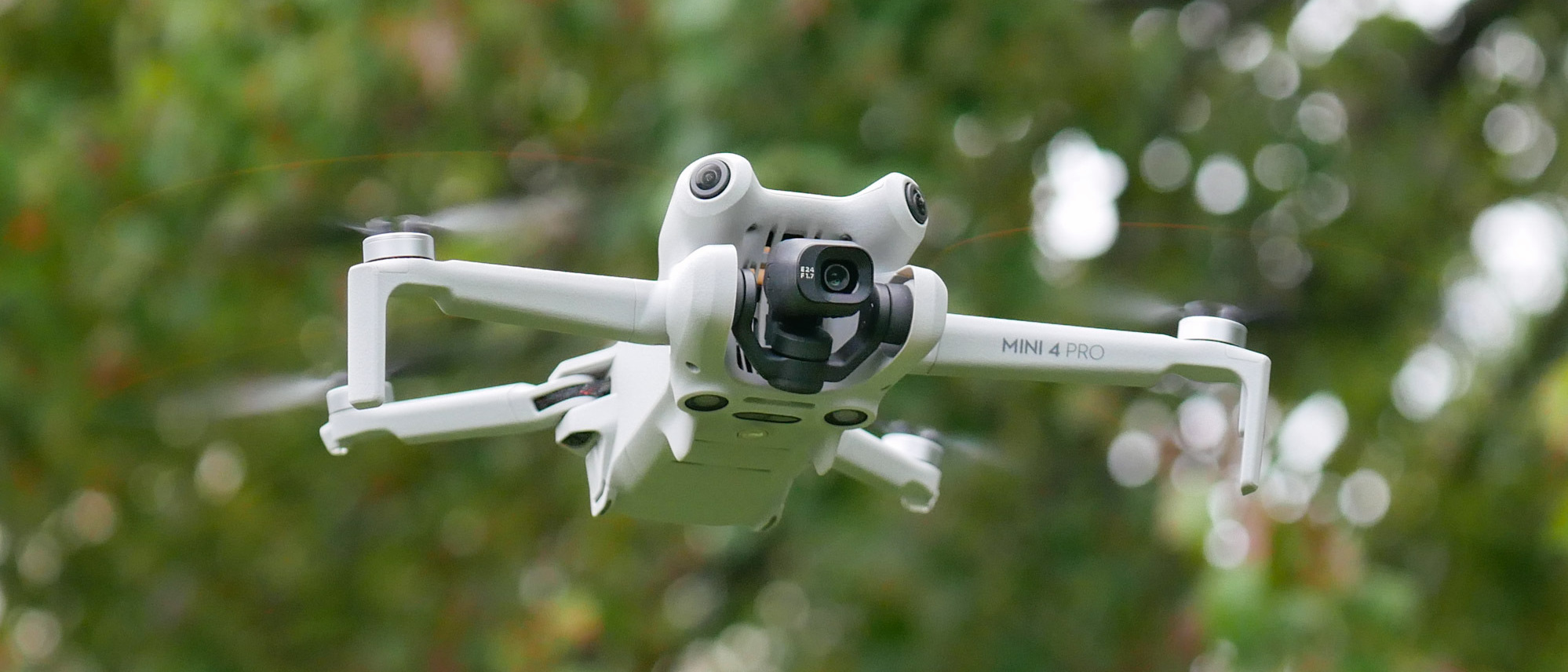Tom's Guide Verdict
The DJI Mini 4 Pro gains iterative improvements that give this tiny drone a robust package that caters to beginners and experienced flyers, but casual flyers should check out the company's less expensive offerings.
Pros
- +
Improved low light camera performance
- +
Smooth looking 1080p 60fps video transmission
- +
Excellent tracking & obstacle avoidance
Cons
- -
Still pricey for a small drone
Why you can trust Tom's Guide
Flight Time: 30 minutes
Camera sensor: 1/1.3-inch CMOS, 48MP
Max video resolution: 4K/100 fps
FAA Registration: Not required
Rotors: 4 (2 blades per rotor, replaceable)
Size (unfolded): 9.6 x 11.4 x 2.1 inches
Weight: 8.8 ounces
I’ve been flying DJI’s drones as far back as 2017, and with each new iteration, I’m always astounded that I’ve yet to find a rival drone maker that I can confidently say can match its robust lineup and exceptional video performance. It's no shock that DJI has some of the best drones around. Most recently, I’ve taken the DJI Mini 4 Pro to check out all of the new features and innovations packaged into DJI’s latest sub-compact sized drone.
Since there are few alternatives from other drone makers that can match its breadth of features, I can only say how it stacks up to past DJI drones I’ve flown — like the DJI Mini 3 Pro and DJI Avata. They give me an idea of how DJI improved upon its latest drone, especially when it comes to video performance, tracking, and obstacle avoidance.
The series has long been understood as the drone for beginners, but at a whopping $759, it’s a premium you’ll have to pay in order to bypass the FAA’s registration requirement for drones that are 250 grams (0.55 pounds) or more in weight. The price is steep, but you need to know that it’s accompanied by a slew of features that can help first time drone flyers to become seasoned pros after several flights.
After getting some good flight times with the DJI Mini 4 Pro, there are several things that stand out to me — along with one thing it lacks. Here’s what they are.
DJI Mini Pro 4 review: Price and availability
The DJI Mini 4 Pro was announced on September 24, 2023, and it’s now available in other combo packages — including a Fly More Combo package that includes additional batteries and a dedicated charging system.
DJI’s Mini line started off as a low-cost, budget alternative with the $399 priced Mavic Mini. However, the price has been increasing ever since that first one — with the DJI Mini 4 Pro at a whopping $759 for the base model that comes with the drone and the DJI RC-N2 controller. If you want to upgrade to the combo that includes the DJI RC 2 controller (the one with its own built-in touchscreen), the price goes up to $959.
It’s become an expensive piece of equipment, which does bring into conversation whether it’s something that first time drone flyers should consider. The compelling reason to buy it as a beginner drone is that you can grow your flying skills, and when it’s paired with its various shooting modes, it can easily suffice as a drone for professional use.
Get instant access to breaking news, the hottest reviews, great deals and helpful tips.
DJI Mini Pro 4 review: What I liked
Noise reduction in low light photos
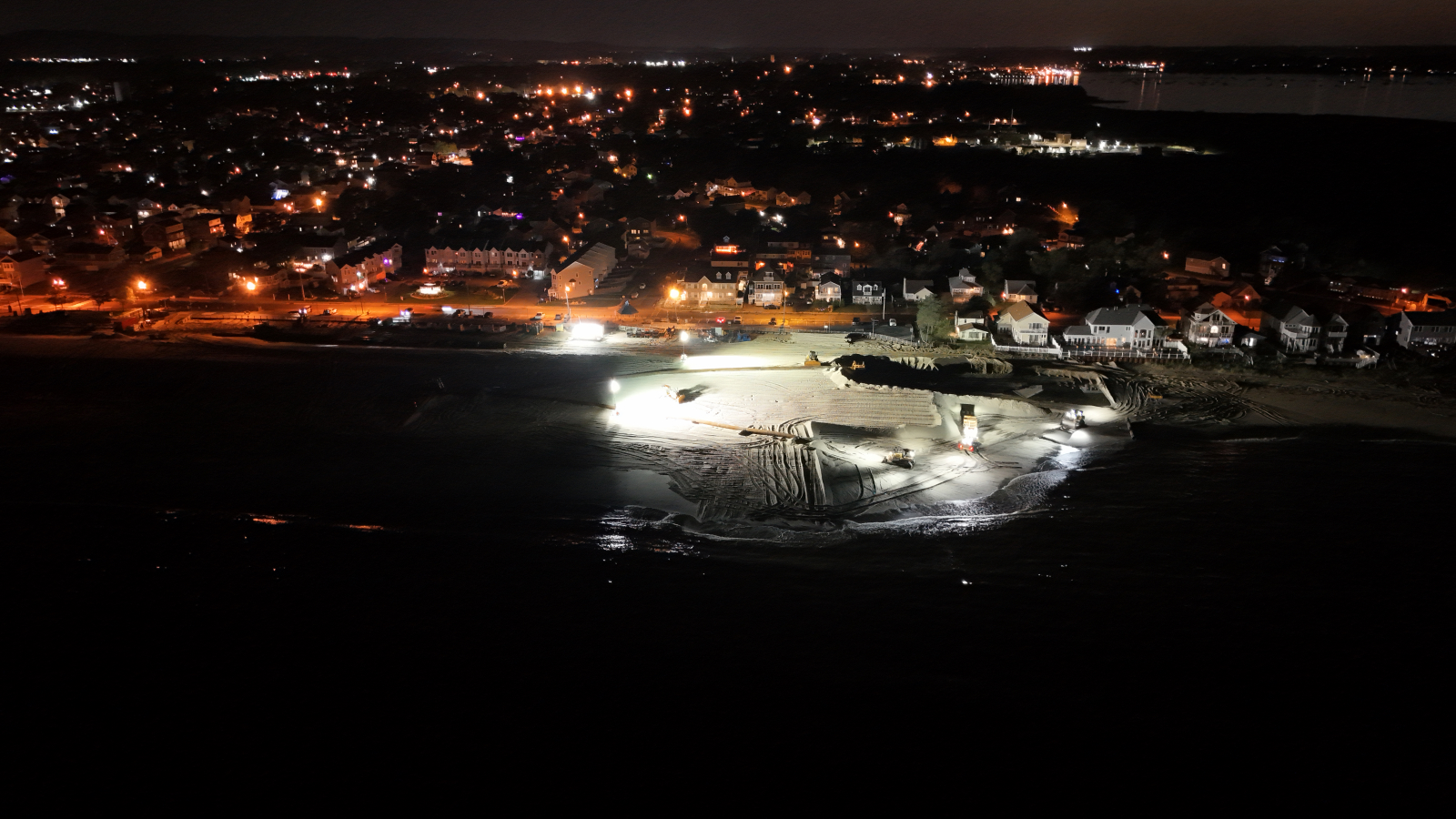
One of the biggest challenges with small drones such as this is that they often have much smaller camera sensors, which unfortunately don’t do well under low light conditions. In fact, I’ve often shied away from doing this with its predecessors in the DJI Mini 2 and Mini 3 Pro — reserving the occasion for drones like the DJI Mavic 3 and DJI Air 2s, due to their larger camera sensors.
However, I’m astounded by how much low light video is improved with the DJI Mini 4 Pro and its 48-megapixel 1/1.3-inch CMOS sensor. The results are impressive because it’s less noisy, while still contrasting shots nicely so that details in the shadows and highlights aren't lost.
Outstanding video quality
I’m rarely disappointed by the video quality from DJI’s drones, and with the Mini 4 Pro, it’s no exception with its 4K 60 fps HDR video capture. Take for instance the panning shot of the crane by the beach that I recorded with the DJI Mini 4 Pro, which is straight from the camera and not edited in any way.
The waves rippling in the water are sharp and clear, while its excellent dynamic range performance manages to balance out the exposure throughout the shot. In fact, there’s still a lot of definition in the clouds where the light is hitting them — while the shadowed areas around the crane still have good detail to them.
Oh-so smooth video transmission
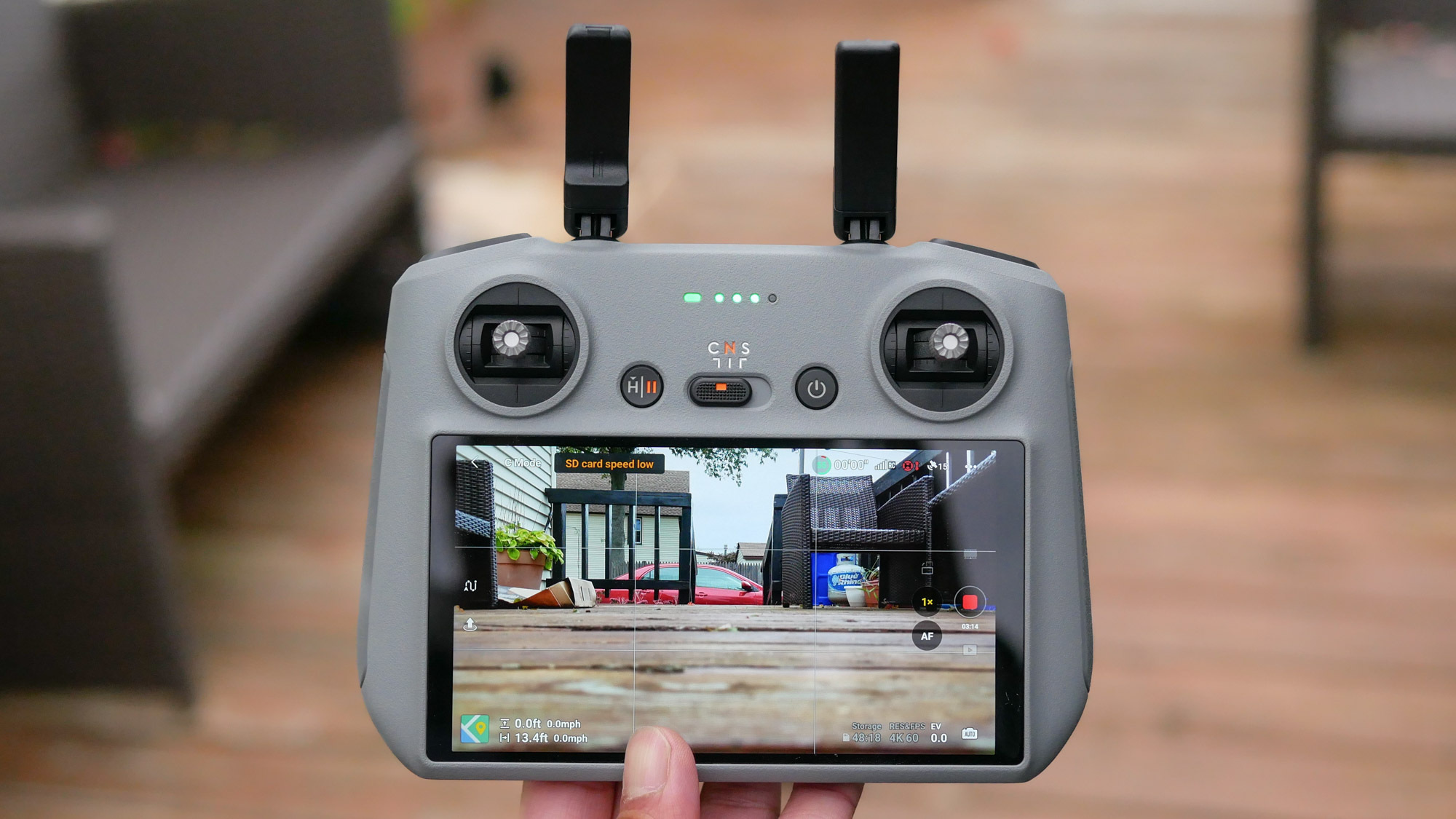
The biggest change for me in piloting the DJI Mini 4 Pro relates to its upgraded DJI O4 transmission. The average person may not be familiar with this, but it’s essentially DJI’s video transmission technology for the live feed you see on the controller.
DJI improves this in a substantial way because it’s now transmitting the feed at 1080p/60fps, versus the 1080p/30fps transmission previously with DJI O3 technology on the Mini 3 Pro. As a religious drone flyer, this is a big change because the feed is smoother and actually more true-to-life when I set the drone to record in 4K 60fps. This also helps out in making the controllers tighter, more responsive than before.
Safer, more reliable subject tracking
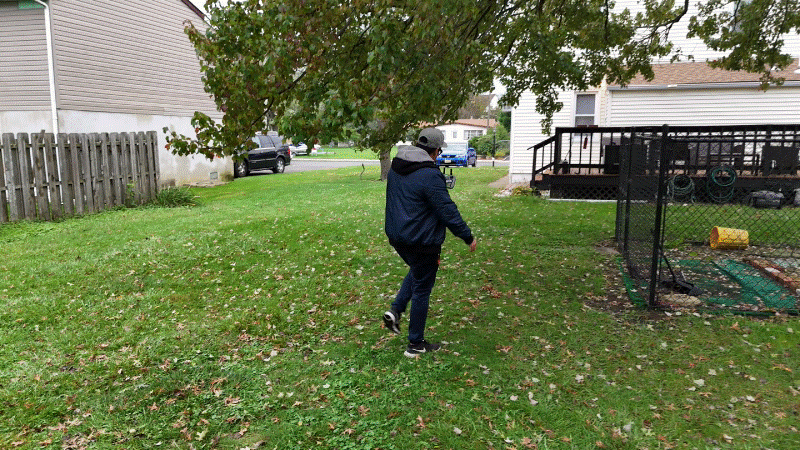
Not only is the DJI Mini 4 Pro safer to fly thanks to more obstacle collision sensors throughout the drone, but it’s also very capable at tracking subjects autonomously with ActiveTrack 360° with enhanced subject tracking. I love using this feature a lot because I can confidently let the drone track an object without the worry of it hitting an obstacle.
I tested this out in my backyard, where a tree sits in the middle with several low hanging branches around. Once I selected myself as the subject to track, the DJI Mini 4 Pro flawlessly avoided everything that got in the way to keep me in frame. In one situation, however, it prevented itself from crashing into the side of my garage by stopping mid-air.
Backup footage for easy sharing
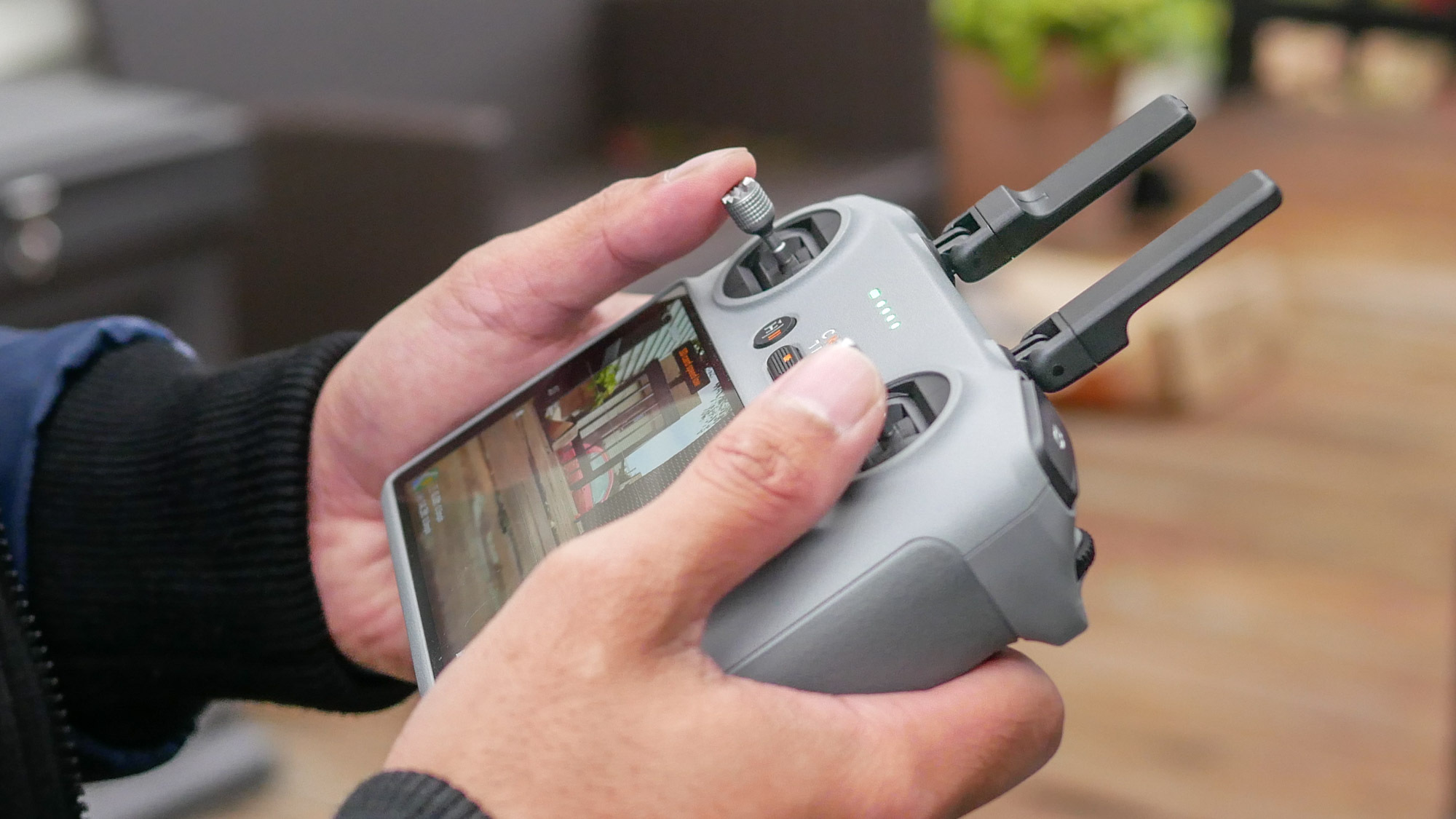
I tested out the DJI Mini 4 Pro with the DJI RC 2 controller, which has an integrated screen. You’ll pay more for this package, but I like how I can quickly get it into the air without having to go through the traditional steps of connecting my smartphone to the standard DJI RC-N2 controller.
The best part is that there’s still the option to cache my recordings onto a microSD card, just in case there’s ever a situation when the memory card in the drone itself goes bad. I like this cache storing too because it lets me easily share photos and videos (usually in lower resolution) on social media, while saving the high quality stuff on the microSD card in the drone for later.
DJI Mini Pro 4 review: What I didn't like
No option to control it without a remote
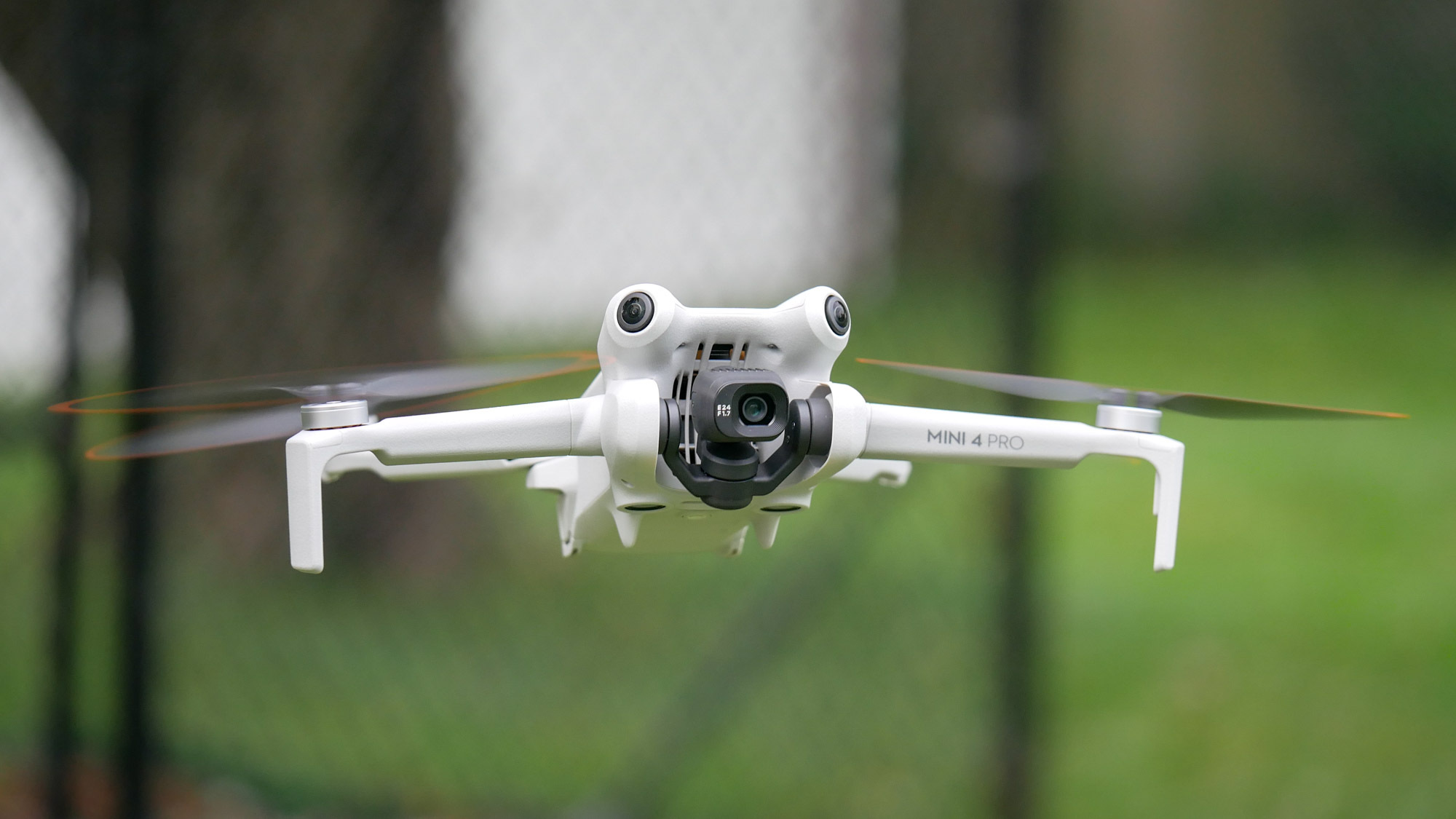
There’s no denying that the DJI Mini 4 Pro is a beast for a small drone, complete with safety features, an outstanding video performance, and various shooting modes that can make your recordings look cinematic. You could make an argument that its $759 cost is warranted, but there’s one thing I wish it had — and that’s the option to control it without a remote.
I know what you’re thinking: why would you ever need a feature like this? Oddly enough, DJI did introduce hand gestures that let pilots operate the DJI Spark without a drone. This was actually the precursor to the DJI Mini line, but the company has yet to go back to offering something similar with its drones.
I’m only making this point because its compact size begs for a feature where it could let it be operated without a remote. Sometimes I just want to quickly capture a swooping panning shot of me at a location and don’t want to be bothered with the usual steps of getting it up into the air with the controller.
The HoverAir X1 drone is the perfect example of a drone made for today’s content creators looking to capture bite-sized in the moment shots, which I loved for its no-hassle, autonomous control. DJI’s Mini lineup would benefit in a big way with something similar, especially when it already is the class leader in video performance, safety, and tracking.
It’s expensive
As I’ve pointed out, the DJI Mini 4 Pro looks awfully expensive compared to the $399 cost of the first model released in the series back in 2019. Of course there’s been a lot of innovation with each release, but $759 for a drone of its size makes it an unconvincing option for those who are on a tighter budget — and especially for beginners.
I really wish it could return to a sub-$500 cost, which would give enough separation against DJI’s mid-range drone in the Air series. In fact, I would be happy if there were a non-pro version, but I suppose DJI’s logic in all of this is to instead consider its Mini SE series. For example, the DJI Mini 2 SE sells for $339 and scales back on the video recording resolution among other things.
Anyone who hasn’t flown a drone before is typically shocked by these prices, so I just wish it could be cheaper.
Should you buy the DJI Mini 4 Pro?
This all leads me to this question: should you buy the DJI Mini 4 Pro? I think there's still a valid argument in getting it, despite the hefty out of pocket cost. One of the main reasons why I recommend the DJI Mini 4 Pro as a beginner drone is because it's one of the safest to fly thanks to its excellent obstacle avoidance system. If it senses that it might collide with an object, it'll stop itself from doing so — even if you still have your thumb pushing down on the throttle.
Secondly, it's a drone that you can use to enhance the skills you develop. Trust me, those safety features do come in hand when you need them, but as you build confidence in your flying, you can unlock its true potential with its various flying modes and automatic recording features. I'm constantly amazed each and every time when I switch over to QuickShots and select one of its preset shooting modes. The best part is that you get these sick looking videos that do all sorts of things, like panning and orbiting around you, without much effort or experience flying.
And finally, it's a compact drone that fits easily into my backpack. For something this small, it's unbelievable what it can achieve. Compared to some other compact drones I've flown, like Autel's EVO Nano+ drone, nothing comes close to matching the DJI Mini 4 Pro's depth of features and excellent performance. Nothing.
More from Tom's Guide
- I strapped an action camera on my cat — check out what he saw
- DJI FPV review: This drone makes you feel like Superman
- I found one of the best uses for a drone — and it’s not what you think

John’s a senior editor covering phones for Tom’s Guide. He’s no stranger in this area having covered mobile phones and gadgets since 2008 when he started his career. On top of his editor duties, he’s a seasoned videographer being in front and behind the camera producing YouTube videos. Previously, he held editor roles with PhoneArena, Android Authority, Digital Trends, and SPY. Outside of tech, he enjoys producing mini documentaries and fun social clips for small businesses, enjoying the beach life at the Jersey Shore, and recently becoming a first time homeowner.
